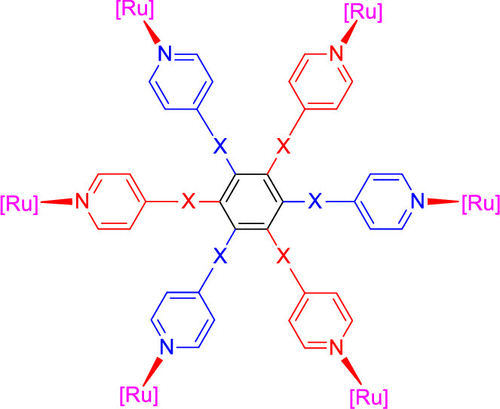当前位置:
X-MOL 学术
›
Organometallics
›
论文详情
Our official English website, www.x-mol.net, welcomes your
feedback! (Note: you will need to create a separate account there.)
Assembled Multinuclear Ruthenium(II)–NNNN Complexes: Synthesis, Catalytic Properties, and DFT Calculations
Organometallics ( IF 2.5 ) Pub Date : 2019-12-19 , DOI: 10.1021/acs.organomet.9b00669 Tingting Liu 1, 2, 3 , Kaikai Wu 1 , Liandi Wang 1 , Hongjun Fan 1, 4 , Yong-Gui Zhou 1 , Zhengkun Yu 1, 5
Organometallics ( IF 2.5 ) Pub Date : 2019-12-19 , DOI: 10.1021/acs.organomet.9b00669 Tingting Liu 1, 2, 3 , Kaikai Wu 1 , Liandi Wang 1 , Hongjun Fan 1, 4 , Yong-Gui Zhou 1 , Zhengkun Yu 1, 5
Affiliation

|
Using a coordinatively unsaturated 16-electron mononuclear ruthenium(II)-pyrazolyl-imidazolyl-pyridine complex [Ru(II)–NNN] as the building block and oligopyridines as the polydentate ligands, pincer-type tri- and hexanuclear ruthenium(II) complexes [Ru(II)–NNNN]n were efficiently assembled. These complexes were characterized by elemental analyses, NMR, IR, and MALDI-TOF mass spectroscopies. In refluxing 2-propanol, the multinuclear ruthenium(II)–NNNN complexes exhibited exceptionally high catalytic activity for the transfer hydrogenation of ketones at very low concentrations and reached turnover frequencies (TOFs) up to 7.1 × 106 h–1, featuring a remarkable cooperative effect from the multiple Ru(II)–NNNN functionalities. DFT calculations have revealed the origin of the high catalytic activities of these Ru(II)–NNNN complexes.
中文翻译:

组装的多核钌(II)–NNNN配合物:合成,催化性能和DFT计算
使用配位不饱和的16电子单核钌(II)-吡唑基-咪唑基-吡啶复合物[Ru(II)–NNN]作为结构单元,并以低聚吡啶为多齿配体,夹型三和六核钌(II)配合物[Ru(II)–NNNN] n被有效地组装。这些配合物的特征在于元素分析,NMR,IR和MALDI-TOF质谱。在回流的2-丙醇中,多核钌(II)-NNNN络合物在极低的浓度下对酮的转移加氢显示出异常高的催化活性,并达到高达7.1×10 6 h –1的周转频率(TOF)。具有多种Ru(II)-NNNN功能的显着协同作用。DFT计算揭示了这些Ru(II)-NNNN配合物具有高催化活性的起源。
更新日期:2019-12-20
中文翻译:

组装的多核钌(II)–NNNN配合物:合成,催化性能和DFT计算
使用配位不饱和的16电子单核钌(II)-吡唑基-咪唑基-吡啶复合物[Ru(II)–NNN]作为结构单元,并以低聚吡啶为多齿配体,夹型三和六核钌(II)配合物[Ru(II)–NNNN] n被有效地组装。这些配合物的特征在于元素分析,NMR,IR和MALDI-TOF质谱。在回流的2-丙醇中,多核钌(II)-NNNN络合物在极低的浓度下对酮的转移加氢显示出异常高的催化活性,并达到高达7.1×10 6 h –1的周转频率(TOF)。具有多种Ru(II)-NNNN功能的显着协同作用。DFT计算揭示了这些Ru(II)-NNNN配合物具有高催化活性的起源。











































 京公网安备 11010802027423号
京公网安备 11010802027423号